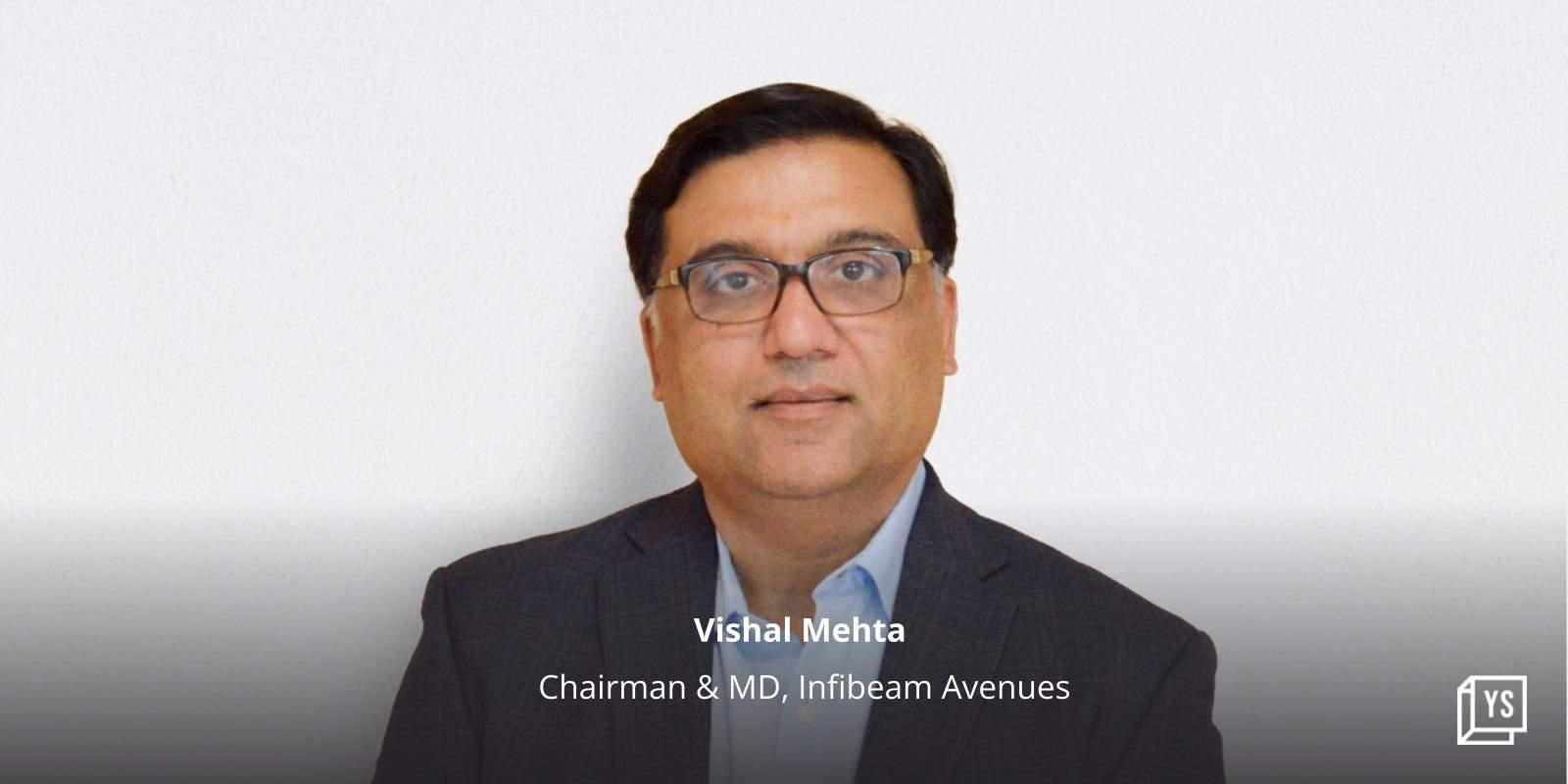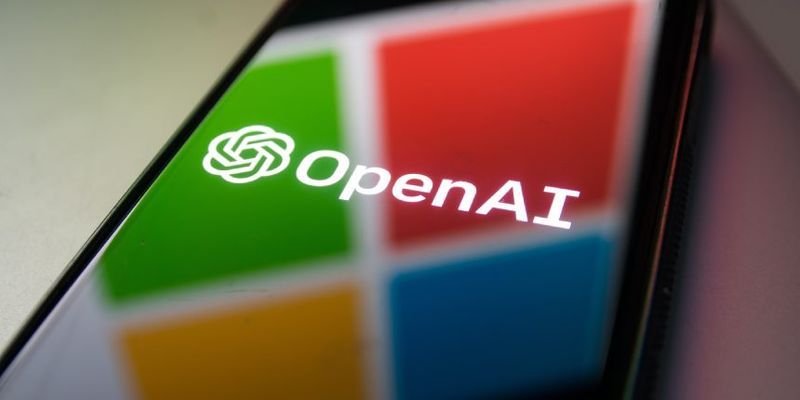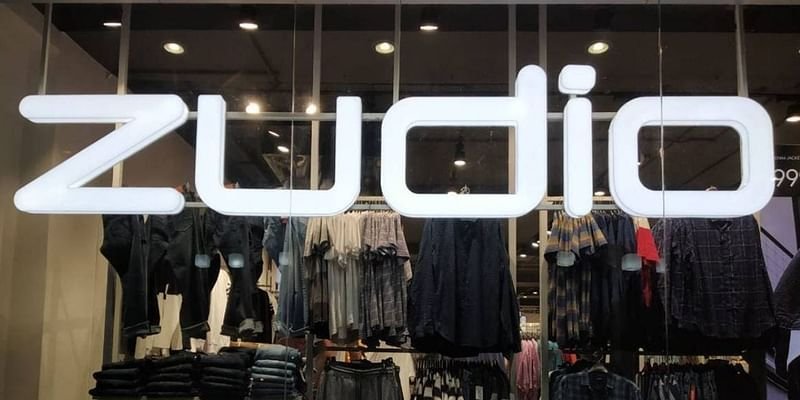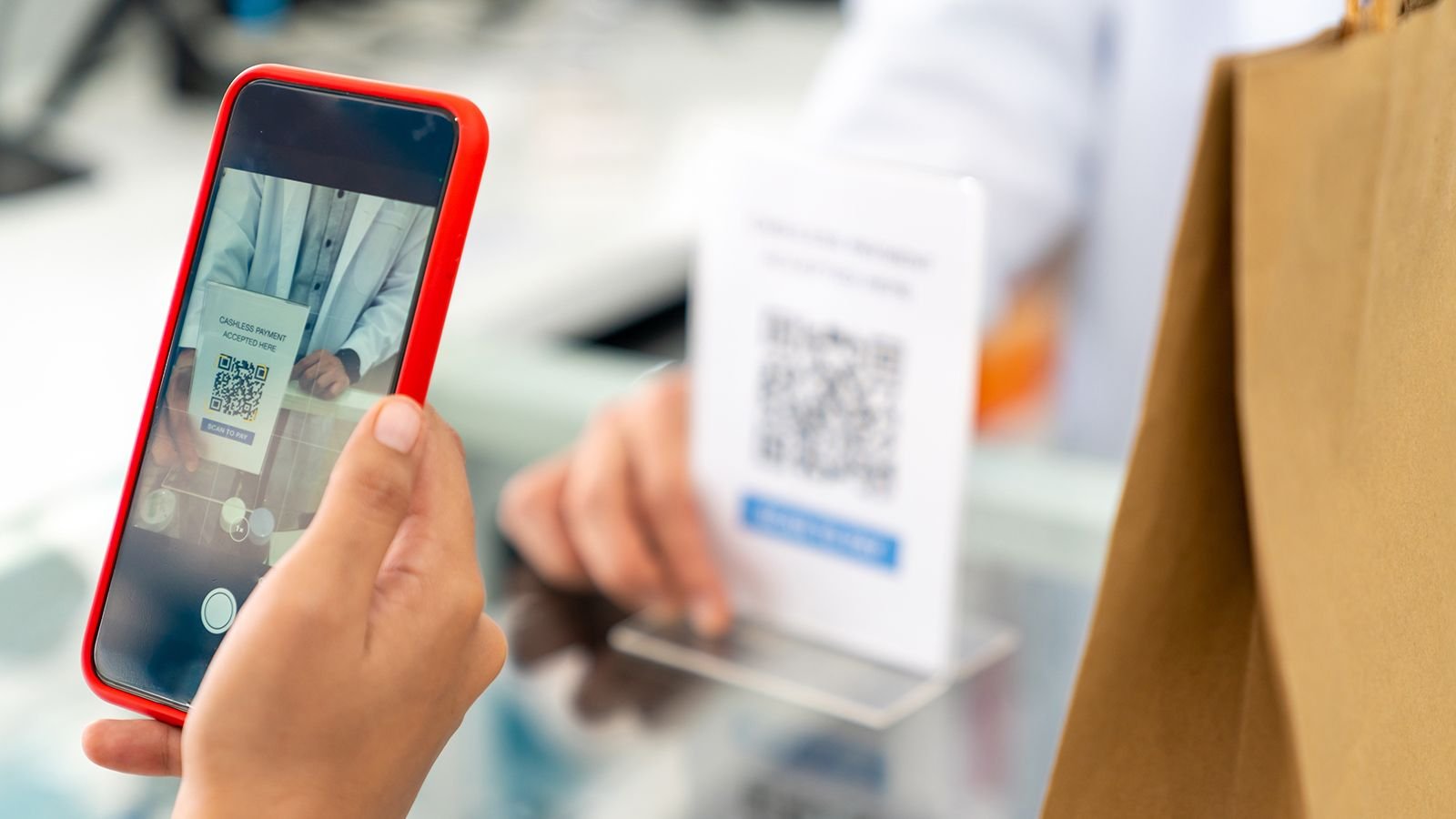Startup
Infibeam Avenues net profit soars 2.7X YoY to Rs 70 Cr in Q1 FY25

Digital payments facilitator Infibeam Avenues has reported a consolidated profit after tax of Rs 69.63 crore for the quarter ended June 30, 2024, more than doubling from Rs 25.46 crore in the year-ago period.
The Ahmedabad-based fintech company, which operates the CCAvenue brand, earned Rs 752.75 crore in revenue from operations in the first quarter of FY25—a marginal 1.4% year-on-year improvement from Rs 742.36 crore in Q1 FY24, according to the company’s stock exchange filing.
Total income for the latest quarter stood at Rs 780.66 crore (Rs 745.18 crore).
A chunk of its revenues came from its payments businesses, which grew 2.6% to Rs 704.77 crore in Q1 FY25, from Rs 686.71 crore in Q1 FY24. Meanwhile, its ecommerce platform business saw a 13.8% decline to Rs 47.98 crore in the latest quarter, from Rs 55.65 crore in Q1 of the previous financial year.
Total expenses for the quarter declined by 1.1% YoY to Rs 702.73 crore from Rs 710.63 crore in the same period last year. Operating expenses declined by 1.45% to Rs 634.25 crore (Rs 643.6 crore in Q1 FY24).
Year to date, its share price more than doubled from Rs 15.05 a piece to Rs 30.98 at market close on Thursday. However, the shares of the company have been fairly unstable, with the last six months returning a 18.04% loss.
Infibeam Avenues Limited is a prominent Indian fintech company established in 2007 by Vishal Mehta and Vishwas Patel. Headquartered in GIFT City, Gujarat, it specialises in digital payment solutions, ecommerce platforms, and enterprise software services.
As of FY24, Infibeam had onboarded over 10 million merchant accounts. Its transaction processing capabilities have improved to handle a payment value of Rs 2.57 lakh crore, excluding RuPay debit cards and UPI payments, in the financial year.
In March this year, Infibeam received the final authorisation from the Reserve Bank of India to operate as a payment aggregator under the Payment Settlements Act, 2007, for its payment gateway brand CCAvenue.
Startup
OpenAI spent $10 million on this domain: Here’s why!

Have you checked out X (formerly Twitter) lately? If you have, you might have come across an intriguing post by Sam Altman featuring a mysterious URL called “Chat.com”, with no caption. Curious? When you click on it, you’re taken straight to OpenAI’s groundbreaking tool, ChatGPT.
OpenAI has made headlines recently with a jaw-dropping move: they reportedly shelled out over $10 million for this domain! At first glance, this looks like a steep price tag in an era where many brands are trimming their budgets to stay lean.
So, what’s the story behind this hefty domain purchase? Let’s take a closer look at this!
Why OpenAI spent millions of dollars on a domain
This strategic move is driven by OpenAI’s mission to establish itself as a dominant force in the realm of AI-powered tools, particularly through its flagship product, ChatGPT.
In the tech world where innovation reigns supreme, securing a domain that perfectly aligns with the branding and functionality of its most popular service is a given. Today, ChatGPT has rapidly become a go-to AI tool used by millions for generating images, answering questions and offering assistance with content creation and even programming.
So, OpenAI’s purchase of chat.com is not just about owning a cool web address—it’s a calculated move to enhance its digital identity and ensure that the ChatGPT experience remains tied to its brand as it expands its offerings.
The bigger picture: OpenAI and HubSpot
In a surprising turn of events, the tech world is buzzing over OpenAI’s recent million-dollar domain acquisition, leaving many to wonder about its intriguing backstory. The domain in question, chat.com, has quite the history—it was initially registered way back in September 1996.
Fast forward to 2023, and it found a new owner in Dharmesh Shah, the co-founder and CTO of the widely popular CRM platform HubSpot, who purchased it for a staggering $15.5 million! But the plot thickens!
Just a few months later, in March, Dharmesh dropped a bombshell: he sold chat.com to an anonymous buyer for an undisclosed sum, which has now been confirmed to be OpenAI. While Sam Altman has remained tight-lipped about the specifics of the acquisition, reports from The Verge suggest that Dharmesh may have pocketed more than $15 million from the sale.
This hefty investment in chat.com is more than just a flashy purchase; it’s part of OpenAI’s strategic vision. Owning a domain that’s not only memorable but also inspires trust is crucial for establishing credibility and attracting customers in this competitive landscape.
Chat.com is now ChatGPT’s new destination
Spending more than $10 million on a domain might seem extravagant, but for OpenAI, this investment is a strategic move aimed at building a more unified, and recognisable brand. With chat.com, the company positions itself at the centre of the rapidly growing AI-powered market. As OpenAI continues to innovate, this domain acquisition will likely prove to be one of the company’s most crucial investments in securing its place at the top of the AI industry.
Startup
Trent Q2 profit grows 47% to Rs 335 Cr; sales jumps 39.3%

Tata Group retail firm Trent on Thursday reported a 46.9% growth in its consolidated net profit to Rs 335.06 crore for the second quarter ended September 2024.
The company had posted a consolidated net profit of Rs 228.06 crore a year ago, according to a regulatory filing from Trent, which operates retail stores under brands like Westside, Zudio, and Star.
Its consolidated revenue from operations increased 39.37% to Rs 4,156.67 crore during the quarter under review. It was Rs 2,982.42 crore in the year-ago period, it added.
Trent’s total expenses rose 48.49% to Rs 3,743.61 crore in the September quarter.
As of September 30, Trent was operating 226 Westside, 577 Zudio and 28 stores across other lifestyle concepts, the company said in an earning statement.
“During the quarter, we opened 7 Westside and 34 Zudio stores (including 1 in Dubai) across 27 cities. We also consolidated 9 Westside and 16 Zudio stores,” it added.
Its Chairman Noel N Tata said: “Consumer sentiment has remained relatively muted. This coupled with seasonality has meant that retail businesses have faced headwinds. In the foregoing context, the team has delivered strong results across brands, concepts, categories and channels in Q2”.
Shares of Trent Ltd on Thursday settled at Rs 6,498.45 on BSE, down 6.54% from the previous close.
Startup
India’s QR soundbox boom: how merchant acquirers can ride the offline payment wave

“UPI account par 18 rupay prapt hue” or “Rs 18 has been deposited to your UPI account.” Just when it seemed like India’s digital payments journey had reached its peak, QR codes paired with soundboxes emerged, showing us that we have only begun.
The familiar chime of these soundboxes now unites millions of UPI users across the country. Together, soundboxes and QR codes offer seamless, real-time payment confirmations, which makes them indispensable resources for merchants.
Why QR-based soundboxes work in India
The adoption of QR codes is rapidly expanding over conventional Point of Sale (PoS) devices, not only in Tier I cities, but also in Tier II, Tier III, and rural areas. In fact, QR code deployment increased by 34% in FY24 to over 350 million. PWC attributes the shift to factors such as high rental costs, MDR (merchant discount rates), and the operational complexity of maintaining PoS machines.
The low cost of QR payment acceptance has also compounded challenges. Merchants may use QR codes from different providers. For merchant acquirers, this translates into higher incidence of churn and an escalation in the overall cost of acquisition, as they invest in both technology and on-the-ground sales efforts.
Hence, QR paired with soundboxes present an opportunity to strengthen merchant loyalty in offline acquisition. Instead of standalone QRs, merchants increasingly prefer QR paired with Soundboxes, as instant and reliable payment confirmations are essential — particularly for those with high foot traffic. Consider a busy sweets shop in Delhi during the holiday season. Now, sellers don’t have to wait for confirmations of UPI payments, which might lead to delays. These devices simplify the process for both customers and merchants by providing real-time, audible payment confirmation. Additionally, it also provides an additional level of security by diminishing the possibility of non-payments and fraud at checkout.
The game changer in offline merchant acquisition
According to a recent Cognitive Market Research report, India’s merchant acquiring market reached $611.21 million in 2024 and projected to grow at a CAGR of 12% between 2024-2031, driven by regulatory support. Another report by Kearney highlights that retail digital payments is expected to double, from $3.6 trillion in FY24 to $7 trillion by FY30.
As this growth unfolds, the challenge for acquirers—both banks and merchant aggregators — will be how they capture this opportunity. Given the operationally intensive nature of the business scaling profitably is far from simple. For example, if an acquirer wants to offer Soundboxes to its merchants, they need a reliable device vendor, manage inventory, across remote merchant locations nationwide, partner with logistics providers for shipment, test every dispatched unit, and establish merchant support operations. Setting up this infrastructure could delay their go-to-market, increasing the risk of losing merchant-led businesses to competitors. The traditional ‘do-it- yourself’ model, where acquirers handle everything from merchant acquisition to backend operations, is increasingly unsustainable and non-core to a merchant acquirer’s business.
Offline Payments as a Service (PaaS) simplify payment operations for acquirers by handling the entire merchant and transaction lifecycle. This includes onboarding, device management, and transaction processing. By integrating business and tech operations with advanced payment software, PaaS solutions allow acquirers to focus on strategic growth rather than operational complexities.
Through a managed services model, acquirers can significantly reduce merchant acquisition costs by digitizing the onboarding process and streamlining due diligence. They also handle device logistics, including shipping, inventory, and support. For example, a merchant in a remote rural area needing assistance with a device like SoundBox receives instant support through the managed services provider, who ensures resolution within contracted service levels, supporting uninterrupted business for the merchant.
Additionally, a dedicated UPI Switch for merchant transactions can help acquirers process transaction volumes. A dedicated switch can reduce load on the UPI switch, ensuring smooth, efficient management of growing transaction volumes and delivering a seamless payment experience. PaaS also provides value added services such as recon /dispute and complaints management, helping acquires to promote stickiness among merchants.
Scan and pay
P2M (person-to-merchant) payments, which comprise 60% of UPI transactions, offer a substantial opportunity for expansion, particularly in non-metropolitan regions. This potential is aligned with the government’s and RBI’s commitment to promoting financial inclusion.
From your neighbourhood vegetable vendor to the supermarket in your locality, we are seeing or rather hearing soundboxes buzzing everywhere. It’s an example of how offline merchants are keen to embrace digital solutions that simplify their transaction processes. The combination of QR codes and soundbox technology has emerged as a standout innovation in this space and PwC’s projects that 54 million such devices will be deployed by FY29.
As a new operating model, PaaS will help acquirers drive their go-to-market strategies and strengthening their market presence while reducing capital expenditure significantly. By streamlining operations and offering scalable solutions, PaaS not only supports business growth but also fosters a more inclusive financial ecosystem that benefits all stakeholders.
(Deepak Chand Thakur is the CEO & Co-founder of NPST)
(Disclaimer: The views and opinions expressed in this article are those of the author and do not necessarily reflect the views of YourStory.)
-

 Startup Stories1 year ago
Startup Stories1 year agoWhy Millennials, GenZs Are Riding The Investment Tech Wave In India
-

 Startup Stories1 year ago
Startup Stories1 year agoStartups That Caught Our Eyes In September 2023
-

 Startup Stories1 year ago
Startup Stories1 year agoHow Raaho Is Using Tech To Transform India’s Fragmented Commercial Trucking
-

 Startup Stories1 year ago
Startup Stories1 year agoMeet The 10 Indian Startup Gems In The Indian Jewellery Industry’s Crown
-

 Crptocurrency8 months ago
Crptocurrency8 months agoLither is Making Crypto Safe, Fun, and Profitable for Everyone!
-

 Startup Stories1 year ago
Startup Stories1 year agoHow Volt Money Is Unlocking The Value Of Mutual Funds With Secured Lending
-

 Startup Stories1 year ago
Startup Stories1 year agoWhy Moscow-Based Kladana Considers Indian SME Sector As The Next Big Market For Cloud Computing
-

 E-commerce1 year ago
E-commerce1 year agoTop Online Couponing Trends To Watch Out For In 2016




